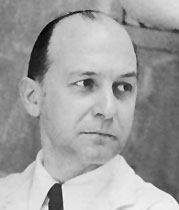He was born in La Plata, Buenos Aires Province, on December 14th 1891. He was the seventh of nine siblings, children of Antonio Curatella, an Italian decorator and sculptor, and of Clara Manes. When he was fourteen, he worked as a typographer but, after a serious accident, he had to give it up.
In 1906, his family moved to Buenos Aires. There he began his training as a sculptor at Arturo Dresco's studio

, where he received a sound grounding and had an opportunity to get in touch with the intellectual world. He met young painters, such as Walter de Navazio, Ramón Silva and Valentín Thibon de Libian. The following year he enrolled in the Academia de Bellas Artes but he was soon to drop out. His first portraits of his brothers date from that time.
In 1911, with a scholarship granted by the Province of Buenos Aires, he travelled to Florence where he worked tenaciously. He soon felt the need to visit museums and he travelled throughout France, Britain, Germany, Austria, Belgium and the Netherlands.
He settled in Paris, where he attended the studios of Aristide Maillol and Antoine Bourdelle. From 1912, he frequently sent works to the Salón Nacional and when World War I broke out, he returned to Argentina, where, in 1916, he founded the Salón de Otoño (Autumn Salon) in La Plata.
A year later, he returned to Paris and studied at the Ranson Academy, where Maillol, Maurice Denis and Paul Sérusier were teaching. His sculptures of that period were characterised by synthesis.
After a stay in Buenos Aires, in 1920 he returned to Paris where Bourdelle advised him to work alone. He came to know André Lhote and studied his method. Works such as Pensativa (Thoughtful) and Las tres bañistas (The three swimmers) bear witness to this. He frequented Juan Gris, Ferdinand Léger, Albert Gleizes, Gino Severini and the sculptors, Henri Laurens and Costantin Brancusi. He got involved with the avant-garde movements.
In 1922, he married the French painter, Germaine Derbecq. In those days, Gris's figures inspired him to produce works such as El acordeonista (The Accordionist) and El guitarrista (The guitarist), whose faceted volumes displayed great areas of light and shade. In 1925, he exhibited at Vavin Gallery together with a group of sculptors and, the following year, he was invited to collaborate in producing the pergola for the Decorative Arts Exhibition. For the occasion, he produced a relief, Lancelot y Geneviève, which is currently located in the town of Etampes, in Seine-et-Oise. That same year, he was appointed Argentine ambassador to France and he suspended his sculpturing activity for a while.
In 1933, he obtained the Second Prize at the Salón Nacional and, a year later, his son Jorge Antonio was born. Around 1937, he was Adviser to the General Commissioner of the Argentine Pavilion at the Paris Universal International Exhibition; he produced two high reliefs, one with the map of Argentina and the other representing the two hemispheres. In 1939, on the eve of World War II, he had to take charge of the repatriation of Argentines residents in France. During the war, due to the lack of materials, he made scale models of plasticine, metal or cardboard, among which are the sketches for Estructura madre (Mother Structure) that would be carried out in full size in 1945. He was to produce 8 more pieces on this subject, adapting them to suit each of the materials used - iron, bronze, acrylic and marble.
He participated in the 1952 Venice Biennial. In 1955, a donation of his work was accepted, as had been proposed in 1949 for the creation of a museum of modern art in Buenos Aires. As such institution did not exist, the works were sent to the Museo Nacional de Bellas Artes. In 1957, he took part at the São Paulo Biennial and prepared the high reliefs El drama (The Drama) and La comedia (The comedy) for the Teatro General San Martín. He was general commissioner of the 1961 Paris Biennial and, in 1962, he organised Pablo Curatella Manes et Trente Argentins de la Nouvelle Génération, exhibition held at Creuze gallery in the same city. As a result of this exhibition, the Paris Museum of Modern Art acquired El guitarrista (The Guitarist). He spent his last months in Paris facing the difficulties of the shipment of his donation. He died in Buenos Aires on November 16th 1962, before the arrival of his works at the Museo Nacional de Bellas Artes.
